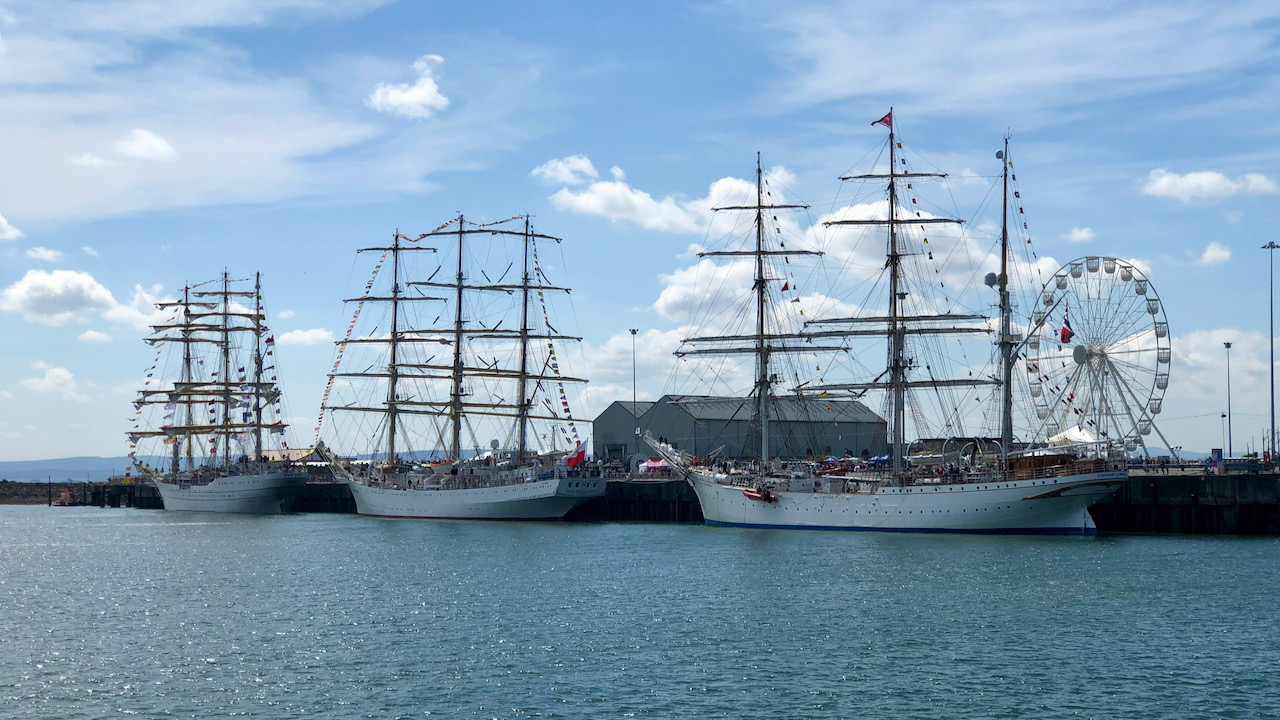‘Out and about’ today was a visit to see the Tall Ships in Hartlepool. We cycled in from the North Gare, via the revitalised Seaton Carew, which appeared quite spruced up and impeccably clean — not like I remembered.
As we arrived at the Victoria docks, we were greeted by the sight of approximately 10 to 11 ‘Tall Ships’ that had made their way from Den Helder in the Netherlands. Elsewhere, a flotilla of smaller vessels was moored in the Marina. All these splendid ships, including the Bima Suci, Dar Mlodziezy, and Statsraad Lehmkuhl pictured above, which were berthed at Irvines Quay, would soon set sail for the Norwegian port of Fredrikstad next Saturday.
Looking back into the history of Victoria Dock, we learn that its construction was completed by 1840. Spanning an area of about 20 acres, it boasted 17 coal drops and 3 ballast cranes. Interestingly, in 1832, the town possessed only two modest vessels, primarily engaged in ferrying flour to Sunderland, Shields, and other parts. However, by 1839, the number of registered ships had surged to 90, and by 1841, the Hartlepool Railway was transporting more coal than any other railway in northern England. The Hartlepool Dock and Railway Company subsequently acquired the land on the seaward side of the channel, opposite the unfinished dock. The establishment of the harbour and dock led to a substantial expansion in trade1Horton, Minnie C. “The Story of Cleveland”. Page 447. Cleveland County Libraries. 1979 ISBN 0 904784 09 6.
Delving into the origins of Irvines Quay, apparently it owes its name to Irvine Currie and Company, established in 1863. Their inaugural vessel, the Island Queen, took to the waters in August 1864, and four additional ships were produced until 1866, when the shipyard temporarily closed to make way for the construction of a dry-dock. Between 1866 and 1870, the yard focused on repair and overhaul work, earning a reputation as salvagers of stranded and sunken ships. In 1909, the yard merged with the Furness, Withy and Company’s shipyard, which continued operations through various changes of ownership until succumbing to the financial downturn of the 1920s. The shipyard ceased operations in 1924, and the doors of the yards were finally shut in 1925. Irvine Currie and Company ultimately went into liquidation in 19302Hartlepool History Then & Now – Irvines Shipyard URL: https://www.hhtandn.org/venues/205/irvines-shipyard.
- 1Horton, Minnie C. “The Story of Cleveland”. Page 447. Cleveland County Libraries. 1979 ISBN 0 904784 09 6
- 2Hartlepool History Then & Now – Irvines Shipyard URL: https://www.hhtandn.org/venues/205/irvines-shipyard

Leave a Reply